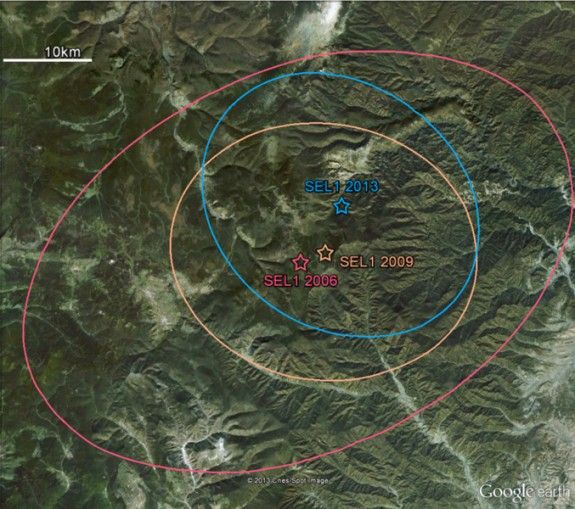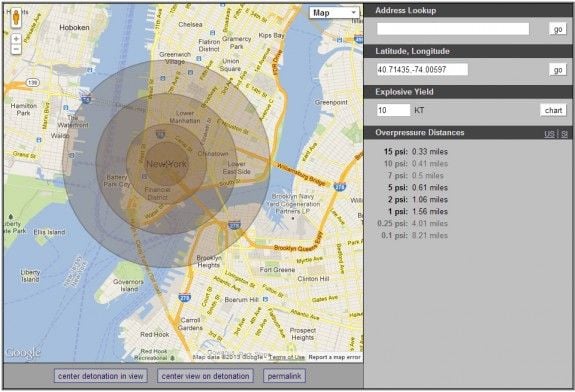How Much Damage Could North Korea’s New Nuke Do?
North Korea’s new nuke could take out a big chunk of Lower Manhattan
/https://tf-cmsv2-smithsonianmag-media.s3.amazonaws.com/filer/2013021209012602_12_2013_nuke.jpg)
Overnight, seismic sensors operated by the Comprehensive Nuclear Test-Ban Treaty Organization and the U.S. Geological Survey detected signs of a nuclear detonation in North Korea. The sensors picked up a release of energy roughly equivalent to a magnitude 5.1 earthquake from a source 1 kilometer (about three-fifths of a mile) underground, twice as large as the country’s previous nuclear tests and emanating from roughly the same region just off of “Nuclear Test Road,” says BoingBoing.
On top of the seismic detections, says Discovery News, North Korea has come forward claiming that it has “successfully carried out an underground nuclear test of a new, ‘miniaturized’ device.” World organizations and governments, including President Obama, have been quick to denounce the test.

Based on the power of the detected detonation, says The New York Times, the nuclear explosion was likely of “approximately several kilotons.” The South Korean government, says the Atlantic Wire, pegs the explosion at being around 10 kilotons. This, for reference, is smaller than the 15 kiloton “Little Boy” bomb that wiped out Hiroshima, Japan at the end of World War II.
Without a point of reference, though, it’s difficult to imagine the potential devastation that one of these nukes could cause were they set off somewhere more sensitive than an underground test facility. This Google Maps overlay tool, designed by programmer Eric Meyer, tries to estimate the area that would be affected by the pressure wave given off by a nuclear explosion set off at ground level.

The different rings denote different pressure waves, from 15 pounds per square inch down to 0.1 psi. According to the National Oceanic and Atmospheric Administration’s Office of Response and Restoration, a pressure wave of 8.0 psi would be enough to wipe out buildings, while a 1.0 psi wave would shatter glass.
So, based on those estimates, North Korea’s new nuke would be enough to wreck a big chunk of Lower Manhattan. This is all, of course, looking only at the immediate effects of the blast and ignoring the after-effects of radiation fallout.
More from Smithsonian.com:
North Korea’s New Video Is Only Its Latest Propaganda About Attacking the U.S.
/https://tf-cmsv2-smithsonianmag-media.s3.amazonaws.com/accounts/headshot/smartnews-colin-schultz-240.jpg)
/https://tf-cmsv2-smithsonianmag-media.s3.amazonaws.com/accounts/headshot/smartnews-colin-schultz-240.jpg)